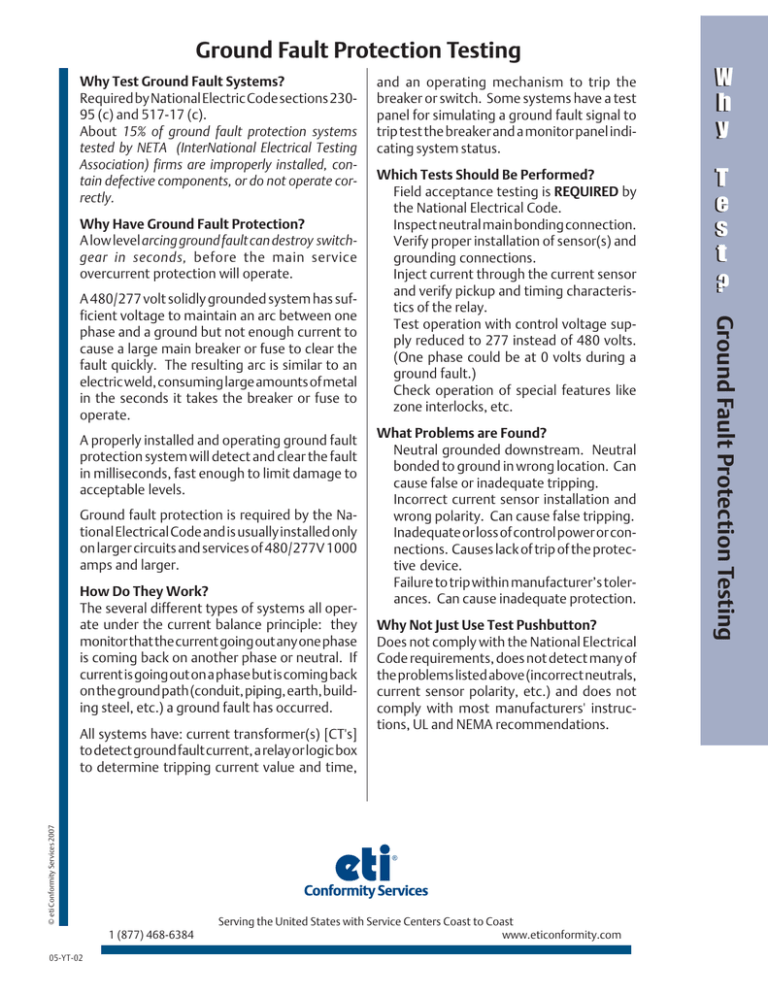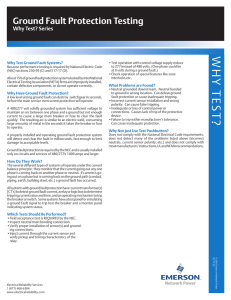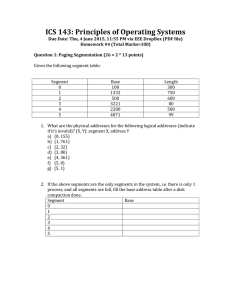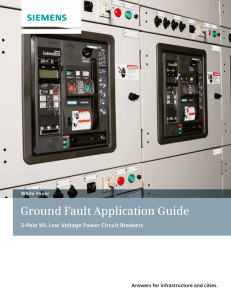W h Ground Fault Protection Testing
advertisement

Ground Fault Protection Testing Why Test Ground Fault Systems? Required by National Electric Code sections 23095 (c) and 517-17 (c). About 15% of ground fault protection systems tested by NETA (InterNational Electrical Testing Association) firms are improperly installed, contain defective components, or do not operate correctly. Why Have Ground Fault Protection? A low level arcing ground fault can destroy switchgear in seconds, before the main service overcurrent protection will operate. A properly installed and operating ground fault protection system will detect and clear the fault in milliseconds, fast enough to limit damage to acceptable levels. Ground fault protection is required by the National Electrical Code and is usually installed only on larger circuits and services of 480/277V 1000 amps and larger. How Do They Work? The several different types of systems all operate under the current balance principle: they monitor that the current going out any one phase is coming back on another phase or neutral. If current is going out on a phase but is coming back on the ground path (conduit, piping, earth, building steel, etc.) a ground fault has occurred. © eti Conformity Services 2007 All systems have: current transformer(s) [CT's] to detect ground fault current, a relay or logic box to determine tripping current value and time, What Problems are Found? Neutral grounded downstream. Neutral bonded to ground in wrong location. Can cause false or inadequate tripping. Incorrect current sensor installation and wrong polarity. Can cause false tripping. Inadequate or loss of control power or connections. Causes lack of trip of the protective device. Failure to trip within manufacturer’s tolerances. Can cause inadequate protection. Why Not Just Use Test Pushbutton? Does not comply with the National Electrical Code requirements, does not detect many of the problems listed above (incorrect neutrals, current sensor polarity, etc.) and does not comply with most manufacturers' instructions, UL and NEMA recommendations. ® 1 (877) 468-6384 05-YT-02 Which Tests Should Be Performed? Field acceptance testing is REQUIRED by the National Electrical Code. Inspect neutral main bonding connection. Verify proper installation of sensor(s) and grounding connections. Inject current through the current sensor and verify pickup and timing characteristics of the relay. Test operation with control voltage supply reduced to 277 instead of 480 volts. (One phase could be at 0 volts during a ground fault.) Check operation of special features like zone interlocks, etc. Serving the United States with Service Centers Coast to Coast www.eticonformity.com W h y T e s t ? Ground Fault Protection Testing A 480/277 volt solidly grounded system has sufficient voltage to maintain an arc between one phase and a ground but not enough current to cause a large main breaker or fuse to clear the fault quickly. The resulting arc is similar to an electric weld, consuming large amounts of metal in the seconds it takes the breaker or fuse to operate. and an operating mechanism to trip the breaker or switch. Some systems have a test panel for simulating a ground fault signal to trip test the breaker and a monitor panel indicating system status.








